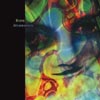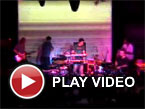Biota/Mnemonists, "Musique Actuelle 1990"
 This 1990 live recording documents an interesting moment in the history of one of the U.S.?s most interesting and long-standing avant-garde collectives. Under the early tutelage of Chris Cutler, the Colorado-based group has, since 1979, produced a wealth of music rooted in the early admirer/member's progressive legacy, an elusive, genre-bending approach with a particular emphasis on rustic folk-pop and dark, frayed psychedelia.Anomalous
This 1990 live recording documents an interesting moment in the history of one of the U.S.?s most interesting and long-standing avant-garde collectives. Under the early tutelage of Chris Cutler, the Colorado-based group has, since 1979, produced a wealth of music rooted in the early admirer/member's progressive legacy, an elusive, genre-bending approach with a particular emphasis on rustic folk-pop and dark, frayed psychedelia.Anomalous
As with previous like-minded collectives, the studio environment has become, with time, an integral part of Biota's creative direction. While the group's core instrumentation is uniquely acoustic (including accordion, hurdy-gurdy, saxophone, viola, and the more exotic curtal, crumhorn, and shawm), their music requires a considerable amount of keen electronic processing to produce its dense, disorienting, often surrealist currents. There is no typical Biota sound; their records map a sound world that is impossible to summarize, touching on woody baroque pop, free jazz, contemporary chamber music, and ambient soundtracking, with plenty of extra space left to the band's always-inventive, never-gratuitous forays into industrial-styled noise. The constants that do exist in their output appear only in the music's more confusing qualities: the murky sheen that keeps even the most immediate or accessible phrases at a mysterious distance, the conscious effort to make the percussion slightly and perpetually off-beat, and the wobbly perch of particular instruments in the mix, hovering a few inches from their comfortable timbres as if ghosts of themselves. Much of the power and uniqueness in Biota's music comes from very specific in-studio manipulation of the various instruments, in ways that retain the earthen vigor of acoustic sound to the exclusion of all other comfortable associations surrounding its creation or place with the larger collage. For Musique Actuelle, their first live event in nine years, the band essentially recreated their studio setup onstage, utilizing no samples, tapes, or synthetic sound of any kind. The only amplified instruments are the electric bass and guitar, with all instruments played untreated from the stage, their acoustic sounds gathered via microphones and processed by three band members in real time. The resulting work is site-specific, composed for this particular event alone, and its holds up surprisingly well in comparison to Biota's previous studio recordings. The performance divides into four movements, spanning haunting, dirge-like chamber pieces, Celtic jig-inspired shuffles, a raucous, saxophone-led psych driver, and one massive, slow-burning hulk of ambient sound which ushers in the fourth movement's climactic and conclusive ascension into noise. Sound processing remains a continual presence throughout, at its most subtle supplying simple delay and pitch-bend effects, and at its peak of involvement, transforming the entire performing group into a writhing, fractured mess. The immediacy of the band's unique instrumental palette often gives the music a false simplicity, something quickly denied as skillful electronic manipulations uncover hidden layers of sampled sound or warp specific passages entirely. The complexity of Musique Actuelle is unbelievable for a live recording and almost as staggering when taken at face value. Biota's traversal of stylistic boundaries is in no way arrogant or awkward, and the group's ability, less than halfway through their long life, to transcend a base "fusionist" approach, creating music that sounds just as singular as their recent efforts, is remarkable.



